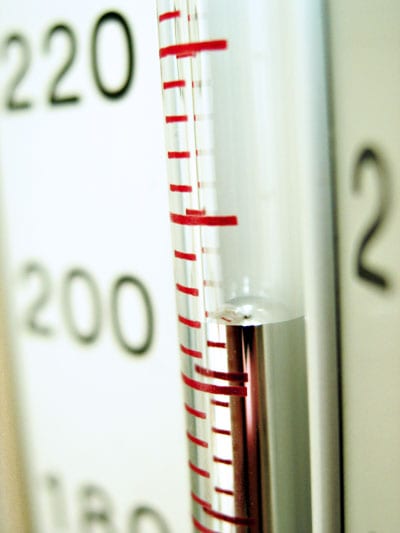
Written By: Gloria Tsang, RD
Title: Founding Registered Dietitian
Alumni: University of British Columbia
Last Updated on:

High blood pressure often has no symptoms or warning signs. If it stays elevated above 120/80 mmHg over time and is uncontrolled, it can lead to heart and kidney disease as well as stroke.

Table of Contents
The DASH Diet (Dietary Approaches to Stop Hypertension) was tested and established by the National Heart, Lung and Blood Institute NHLBI. It recommends limiting salt and sodium intake to control blood pressure; in addition, it also recognizes the roles of another 3 minerals in controlling blood pressure – calcium, magnesium and potassium. Similar to the Dietary Guidelines for American 2005, the DASH diet puts more emphasis on whole grains, fruits and vegetables as well as low-fat dairy and meat products. Studies showed that the DASH diet has been shown to lower both systolic and diastolic blood pressure. Furthermore, it worked very quickly – usually within 2 weeks!
The current sodium recommendation made by the Federal Government’s National High Blood Pressure Education Program NHBPEP is 2400 mg (~1 tsp of salt). The DASH-sodium study showed an even better blood pressure results with an intake of 1500 mg daily.
The following diet is based on 2000 kcal a day.
In general, a diet that emphasizes fruits & vegetables, whole grains and low-fat dairy appears effective in shaving points off a blood pressure reading. In particular, shedding pounds, cutting down on sodium, boosting potassium intake and limiting alcohol are all proven ways to help control blood pressure.
Notes on supplements: Avoid taking the following herbal supplements as they may increase blood pressure: ephedra, ginseng, licorice and feverfew (For detailed information, read Herb Drug Interactions) On the other hand, garlic and flax seed have shown some effects in lowering high blood pressure.
Notes on minerals: Potassium, as well as calcium, plays an important role in regulating high blood pressure. Bananas, beans, tofu and potatoes are all rich sources of potassium. Try baking, roasting or steaming when cooking vegetables. Avoid boiling as potassium leaches out into the water during cooking. As for calcium, an average adult needs at least 1000mg of calcium daily.
Alumni: University of British Columbia – Gloria Tsang is the author of 6 books and the founder of HealthCastle.com, the largest online nutrition network run by registered dietitians. Her work has appeared in major national publications, and she is a regularly featured nutrition expert for media outlets across the country. The Huffington Post named her one of its Top 20 Nutrition Experts on Twitter. Gloria’s articles have appeared on various media such as Reuters, NBC & ABC affiliates, The Chicago Sun-Times, Reader’s Digest Canada, iVillage and USA Today.
blood pressure, DASH, high blood pressure, lower blood pressure, salt, sodium
Stop Counting Produce Servings and Focus on Colors Instead – Podcast